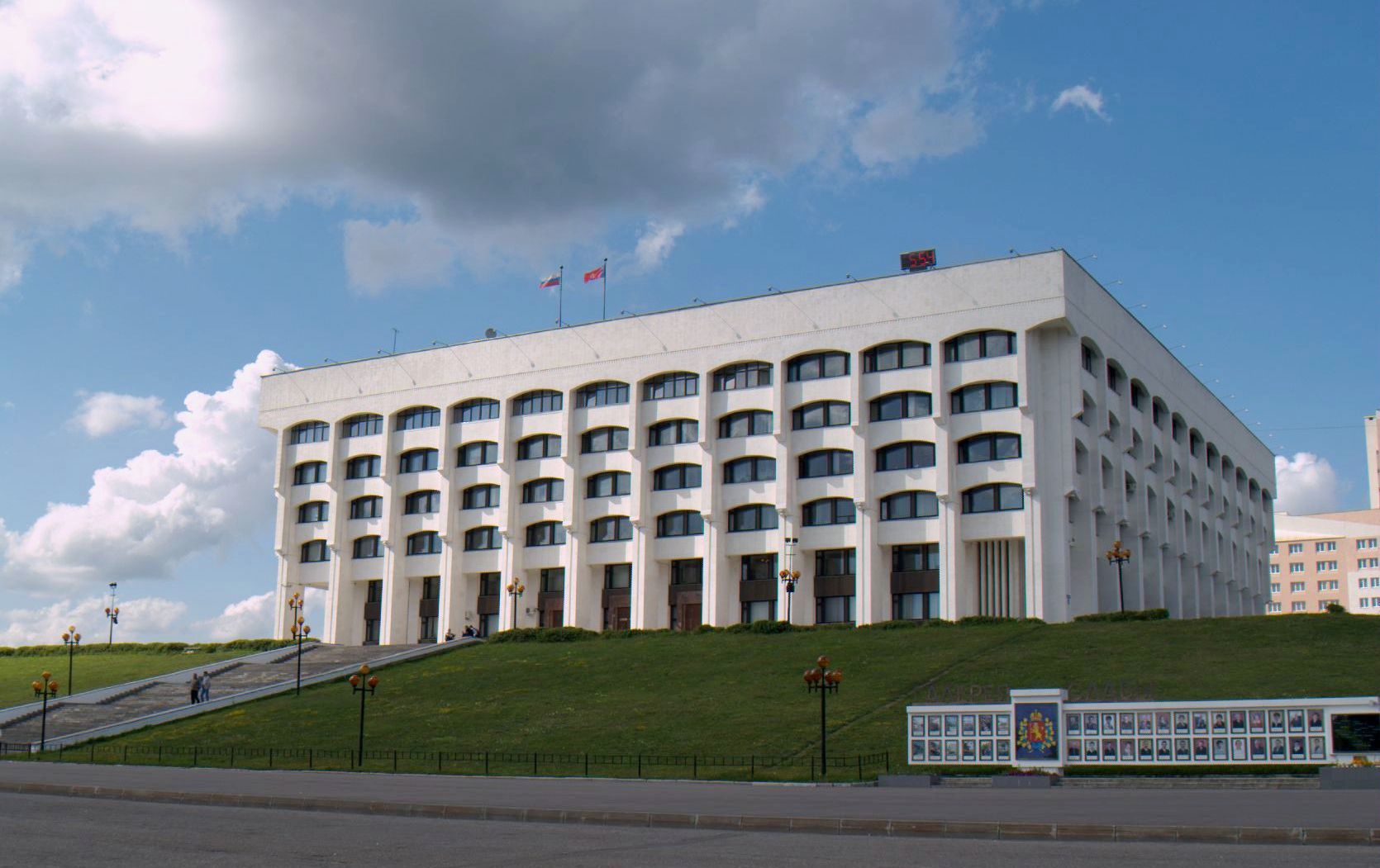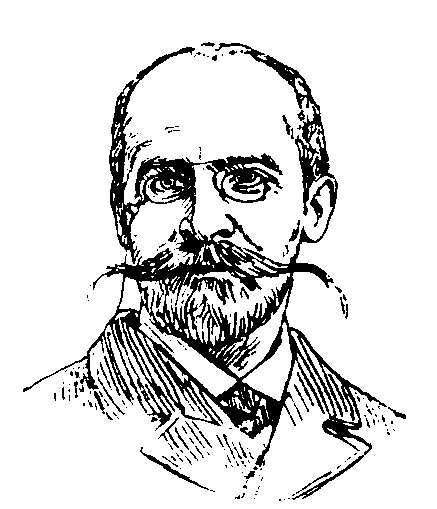|
Yefim Smolin
Yefim Smolin (russian: Ефим Смолин) was a Russian glass-maker and inventor of granyonyi stakan (faceted glass or table-glass), living in the late 17th century and early 18th century in the area of the modern Vladimir Oblast in Russia. Granyonyi stakan has certain advantages over the other drinkware, since due to its form and hardness it is more difficult to break. A legend says that the first known faceted glass was given as a present to Tsar Peter the Great from a glass-maker called Yefim Smolin, living in Vladimir Oblast. He boasted to Tsar that his glass couldn't be broken. Tsar Peter liked the present, however, after drinking some alcoholic beverage from it, he said loudly ''Let the glass be!'' (russian: Стакану быть! - literally ''the glass be''), threw the glass on the ground and managed to break it. But Peter didn't punish the glass-maker, and the production of such glasses continued. According to the legend, people present during this episode misinte ... [...More Info...] [...Related Items...] OR: [Wikipedia] [Google] [Baidu] |
Glass-making
Glass production involves two main methods – the float glass process that produces sheet glass, and glassblowing that produces bottles and other containers. It has been done in a variety of ways during the history of glass. Glass container production Broadly, modern glass container factories are three-part operations: the "batch house", the "hot end", and the "cold end". The batch house handles the raw materials; the hot end handles the manufacture proper—the forehearth, forming machines, and annealing ovens; and the cold end handles the product-inspection and packaging equipment. Batch processing system (batch house) Batch processing is one of the initial steps of the glass-making process. The batch house simply houses the raw materials in large silos (fed by truck or railcar), and holds anywhere from 1–5 days of material. Some batch systems include material processing such as raw material screening/sieve, drying, or pre-heating (i.e. cullet). Whether automated o ... [...More Info...] [...Related Items...] OR: [Wikipedia] [Google] [Baidu] |
Granyonyi Stakan
A faceted glass or granyonyi stakan (russian: гранёный стакан, literally ''faceted glass'') ( uk, granchak гранчак, derived from ''грань'', meaning ''facet'') is a type of drinkware made from especially hard and thick glass and having a faceted form. It is a very widespread form of drinking glass in Russia and the former Soviet Union. Origins The antecedents of the faceted glass in Russian history are dated back to the reign of Peter the Great, who valued the design as being less likely to roll off tables aboard ships. Examples of the first such design were supposedly presented to the tsar by glassmaker Yefim Smolin, from Vladimir Governorate, with the assurance that the glass was unbreakable. After drinking from the glass, the tsar threw it to the ground, breaking it, but was still impressed, stating "Let's have that glass" (russian: Стакану быть!, Stakanu byit!). The breaking of the glass and the associated statement later became remembe ... [...More Info...] [...Related Items...] OR: [Wikipedia] [Google] [Baidu] |
Vladimir Oblast
Vladimir Oblast (russian: Влади́мирская о́бласть, ''Vladimirskaya oblast'') is a federal subject of Russia (an oblast). Its closest border 66 km east of central Moscow, the administrative center is the city of Vladimir, which is located east of Moscow. As of the 2010 Census, the oblast's population was 1,443,693. The UNESCO World Heritage List includes the 12th-century cathedrals of Vladimir, Suzdal, Bogolyubovo, and Kideksha. Geography Vladimir Oblast borders Moscow, Yaroslavl, Ivanovo, Ryazan, and Nizhny Novgorod Oblasts. The oblast is situated in the center of the East European Plain. The Klyazma and the Oka are the most important rivers. There are approximately three hundred lakes. The oblast is situated in a zone of mixed forests. Fauna The oblast's fauna currently includes more than fifty species of mammals (some examples including elk, wild boar, roe deer, red and sika deer, lynx, wolf, squirrel, rabbit, marten, fox, weasel, ... [...More Info...] [...Related Items...] OR: [Wikipedia] [Google] [Baidu] |
Tsar
Tsar ( or ), also spelled ''czar'', ''tzar'', or ''csar'', is a title used by East and South Slavic monarchs. The term is derived from the Latin word ''caesar'', which was intended to mean "emperor" in the European medieval sense of the term—a ruler with the same rank as a Roman emperor, holding it by the approval of another emperor or a supreme ecclesiastical official (the Pope or the Ecumenical Patriarch)—but was usually considered by western Europeans to be equivalent to "king". It lends its name to a system of government, tsarist autocracy or tsarism. "Tsar" and its variants were the official titles of the following states: * Bulgarian Empire ( First Bulgarian Empire in 681–1018, Second Bulgarian Empire in 1185–1396), and also used in Tsardom of Bulgaria, in 1908–1946 * Serbian Empire, in 1346–1371 * Tsardom of Russia, in 1547–1721 (replaced in 1721 by '' imperator'' in Russian Empire, but still remaining in use, also officially in relation to sever ... [...More Info...] [...Related Items...] OR: [Wikipedia] [Google] [Baidu] |
Peter The Great
Peter I ( – ), most commonly known as Peter the Great,) or Pyotr Alekséyevich ( rus, Пётр Алексе́евич, p=ˈpʲɵtr ɐlʲɪˈksʲejɪvʲɪtɕ, , group=pron was a Russian monarch who ruled the Tsardom of Russia from to 1721 and subsequently the Russian Empire until his death in 1725, jointly ruling with his elder half-brother, Ivan V until 1696. He is primarily credited with the modernisation of the country, transforming it into a European power. Through a number of successful wars, he captured ports at Azov and the Baltic Sea, laying the groundwork for the Imperial Russian Navy, ending uncontested Swedish supremacy in the Baltic and beginning the Tsardom's expansion into a much larger empire that became a major European power. He led a cultural revolution that replaced some of the traditionalist and medieval social and political systems with ones that were modern, scientific, Westernised and based on the Enlightenment. Peter's reforms had a lastin ... [...More Info...] [...Related Items...] OR: [Wikipedia] [Google] [Baidu] |
Toast (honor)
A toast is a ritual during which a drink is taken as an expression of honor or goodwill. The term may be applied to the person or thing so honored, the drink taken, or the verbal expression accompanying the drink. Thus, a person could be "the toast of the evening", for whom someone "proposes a toast" to congratulate and for whom a third person "toasts" in agreement. The ritual forms the basis of the literary and performance genre, of which Mark Twain's "To the Babies" is a well-known example. The toast as described in this article is rooted in Western culture, but certain cultures outside that sphere have their own traditions in which consuming a drink is connected with ideas of celebration and honor. While the physical and verbal ritual of the toast may be elaborate and formal, merely raising one's glass towards someone or something and then drinking is essentially a toast as well, the message being one of goodwill towards the person or thing indicated. History According to var ... [...More Info...] [...Related Items...] OR: [Wikipedia] [Google] [Baidu] |
Tableware
Tableware is any dish or dishware used for setting a table, serving food, and dining. It includes cutlery, glassware, serving dishes, and other items for practical as well as decorative purposes. The quality, nature, variety and number of objects varies according to culture, religion, number of diners, cuisine and occasion. For example, Middle Eastern, Indian or Polynesian food culture and cuisine sometimes limits tableware to serving dishes, using bread or leaves as individual plates. Special occasions are usually reflected in higher quality tableware. Cutlery is more usually known as ''silverware'' or ''flatware'' in the United States, where ''cutlery'' usually means knives and related cutting instruments; elsewhere cutlery includes all the forks, spoons and other silverware items. Outside the US, ''flatware'' is a term for "open-shaped" dishware items such as plates, dishes and bowls (as opposed to "closed" shapes like jugs and vases). ''Dinnerware'' is another term use ... [...More Info...] [...Related Items...] OR: [Wikipedia] [Google] [Baidu] |
People From Vladimir Oblast
A person ( : people) is a being that has certain capacities or attributes such as reason, morality, consciousness or self-consciousness, and being a part of a culturally established form of social relations such as kinship, ownership of property, or legal responsibility. The defining features of personhood and, consequently, what makes a person count as a person, differ widely among cultures and contexts. In addition to the question of personhood, of what makes a being count as a person to begin with, there are further questions about personal identity and self: both about what makes any particular person that particular person instead of another, and about what makes a person at one time the same person as they were or will be at another time despite any intervening changes. The plural form "people" is often used to refer to an entire nation or ethnic group (as in "a people"), and this was the original meaning of the word; it subsequently acquired its use as a plural form of p ... [...More Info...] [...Related Items...] OR: [Wikipedia] [Google] [Baidu] |
Russian Inventors
This is a list of inventors from the Russian Federation, Soviet Union, Russian Empire, Tsardom of Russia and Grand Duchy of Moscow The Grand Duchy of Moscow, Muscovite Russia, Muscovite Rus' or Grand Principality of Moscow (russian: Великое княжество Московское, Velikoye knyazhestvo Moskovskoye; also known in English simply as Muscovy from the Lati ..., including both ethnic Russians and people of other ethnicities. This list also includes those who were born in Russia or its predecessor states but later emigrated, and those who were born elsewhere but immigrated to the country or worked there for a considerable time, (producing inventions on Russian soil). For Russian inventions in chronological order, see the Timeline of Russian inventions and technology records. Alphabetical list A B C D E F G H I J K L M N O P R S T U V W Y Z See also * List of Russian scientists * Russian culture * Timel ... [...More Info...] [...Related Items...] OR: [Wikipedia] [Google] [Baidu] |
Year Of Death Unknown
A year or annus is the orbital period of a planetary body, for example, the Earth, moving in its orbit around the Sun. Due to the Earth's axial tilt, the course of a year sees the passing of the seasons, marked by change in weather, the hours of daylight, and, consequently, vegetation and soil fertility. In temperate and subpolar regions around the planet, four seasons are generally recognized: spring, summer, autumn and winter. In tropical and subtropical regions, several geographical sectors do not present defined seasons; but in the seasonal tropics, the annual wet and dry seasons are recognized and tracked. A calendar year is an approximation of the number of days of the Earth's orbital period, as counted in a given calendar. The Gregorian calendar, or modern calendar, presents its calendar year to be either a common year of 365 days or a leap year of 366 days, as do the Julian calendars. For the Gregorian calendar, the average length of the calendar year ... [...More Info...] [...Related Items...] OR: [Wikipedia] [Google] [Baidu] |







_1938.jpg)

